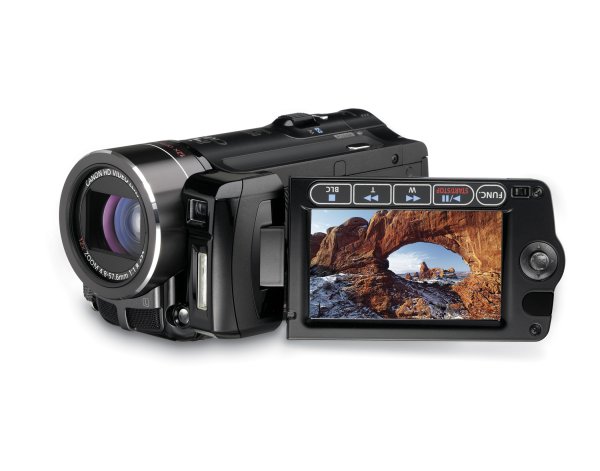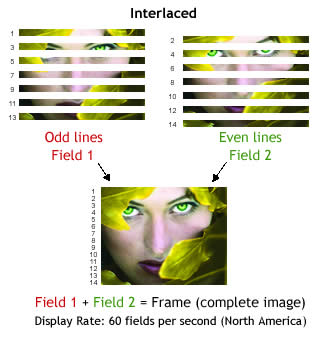TC03 - ICT tools in education (ÁTNÉZNI!: sok link és icon rossz/hiányzik)
Media elements
Digital video technology
 Learning objectives
Learning objectives
When you have completed this session, you should be able to
- define basic terms of video.
Digital Video Technology
 Digital video and audio technology helps archiving our records on CDs or DVDs. We can publish them on the Internet and we can even create special effects easily that would be very difficult and expensive with analogue equipment.
Digital video and audio technology helps archiving our records on CDs or DVDs. We can publish them on the Internet and we can even create special effects easily that would be very difficult and expensive with analogue equipment.
Since the digitally stored video and audio data is transmitted via Internet; it is important to compress the size of the data as much as possible. Different algorithms have been developed for this application which will be discussed in the next chapters.
The editing of audio and video files is done by suitable software. The most known video editor is Premier from the Adobe Company. Well known audio programs are Sonic, Soundforge or Audition (earlier called CoolEdit) from the Adobe Company.
The analogue and digital video technology is based on television broadcasting. Therefore it is good to know some of the basic principles of television.
Television broadcasting
TV picture is made from a series of still pictures. The pictures are transmitted to the receivers when divided into lines. These lines are displayed by electron rays onto the phosphorous coating of the tube surface. In order to achieve a picture free of blinking, and for increasing the frequency of the screen interlaced scanning is used. Electron rays first display the odd lines then returns to the top of the screen and the even lines are displayed between the odd ones. A half TV picture is called field while a full TV picture is called frame.
For color image transmitting the three basic colors (RGB: red, green, blue) must be transmitted beside the brightness value (Y). When knowing the brightness value and two other basic colors the third one can also be determined. Therefore in practice the Y value and the R-Y and B-Y difference is transmitted. This method is called YUV coding. Three color TV standards are used in the world. The most important specifications are the followings:
NTSC (National Television System Committee)
The oldest norm used in the United States and Japan.
The number of lines forming the picture is 525
Refreshing frequency 59,95 Hz
Half refreshing frequency 29,975 Hz
Line frequency 15734,2657 Hz
Number of visible lines 475
(Only 475 lines can be seen because during half picture refreshing (25 line time) no video signal can be displayed.)
PAL (Phase Alternating Line)
It was created by modifying NTSC norm in order to eliminate the sensitivity of the successor for transmission phase torsion.
The number of lines forming the picture 625
Refreshing frequency 50 Hz
Half refreshing frequency 25 Hz
Line frequency 15625 Hz
Number of visible lines 575
SECAM (Séquentiel Couleur á Memoire)
Norm introduced in France. The effect of phase torsion is decreased when switching from line to line only one color difference signal is transmitted. In other parameters it is the same as PAL norm.
Interlaced Scanning
TV image in its full extent made of 625 lines (according to CCIR and OIRT standards). After the 625th line the electron ray returns from the bottom of the screen and this process goes on and on. Drawing the 625 lines on the screen takes 40 ms; this is why the frequency of refreshing is 25 Hz.
Let us stop here for a second. The observation speed of human eye is limited which means it has a significant inertia. This inertia made possible to create TV norms with relatively slow diversion and therefore with small broad band width. If the pixels subsequently following one another in time and the entire picture are flashed with the proper speed our eyes perceive a constant image.
 |
| Source : http://www.anchorbaytech.com |
There is no any problem with the lines refreshed by every 64 µs. However our eyes are not so imperfect and able to detect the 25 Hz flickering of the constantly refreshed screen. The threshold of perturbing flickering is around 40 Hz. According to this if the time of display takes 20ms with 50 Hz the 625 line interval should be decreased to half. It means double speed divergence and wider broad band. This requirement would have caused serious difficulties when TV norms were established.
This problem was solved ingeniously by interlaced scanning. The quintessence of the method is the next (see the right figure): in 20 ms only half of the 625 lines are displayed but the electron ray scans the entire screen during this time from top to the bottom and returns to the empty lines (between the lines drawn on) and fills in the second half of the screen.
Digitizing Analogue Video Signal
Digitizing analogue video signals, similarly as digitizing audio signals, is done by sample taking. The picture is also dissolved into basic units, pixels and the difference of brightness and color values are quantized. Audio signals are usually digitized simultaneously with video signals. Images and sounds are mostly stored in AVI (Audio Video Interleave) format.
During the video digitizing process a series of 16 bit color depth YUV coded bitmaps are recorded which means a huge amount of data. In case of a 25 frame / sec 768 x 576 pixel resolution recording 22 MByte data must be stored in every second.
Video cameras
The development of video system began with television broadcasting. Broadcasted TV programs are the most poplar worldwide even today. However video systems are more and more frequently used in industry, commerce, education, and culture.
The units of the simplest video systems are the camera, the video recorder and the monitor. Obviously for more sophisticated systems more cameras, video recorders, and monitors are used. Video cameras convert the image they detect into electric signals that can be recorded and / or displayed afterwards.
The Theoretical Sketch of How Video Cameras Work
The object to be recorded is projected to the light sensitive layer (2) of the objective (1). The distribution of electric charge on this layer - determined by the image – (charged image) is scanned by an electric ray (3) line by line. The signal created during this scanning induces a variety of voltage according to the light detected. Obviously if the sensitive layer does not receive any light the output signal is not changed (4).
In practice this simple theory can only be realized with sophisticated electric circuits. Black and white cameras at the beginning of TV broadcasting weighted several hundreds of kilograms. Today there are portable color cameras weighting only a few kilos.
When recording black and white images using only one objective is enough. For color televisions beside the brightness signal the signals of the three basic colors must be produced too.
At the end of 1953 the development of a three objective camera which was compatible with flack and white TVs was successful. The three basic colors R, G, B, are created with an optical color decomposer made of prisms, and mirrors with filters.
The Y brightness signal is created from the color signals. There are four objective video cameras too where the brightness signal is produced by a separate objective. However these are merely used in studios.